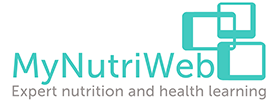
By Sue Baic MSc Registered Dietitian
Health promotion in corporate settings can provide rewarding opportunities for nutrition professionals. Read on to explore why dietary initiatives are valuable in the workplace and discover tips for successful delivery.
Why workplace health?
You may remember recent press coverage on the UK Food Standards Agency comparison of “office cake culture” to the risk of passive smoking (HR Magazine – Cake in the office likened to passive smoking by food watchdog chief). Even if you didn’t agree you’d probably acknowledge that workplaces have considerable potential to influence the health of staff. Many adults spend much of their time at work with UK employees putting in some of the longest hours in Europe. Recently the National Institute for Health and Care Excellence (NICE) highlighted the unique role the social and environmental assets of workplaces can play in the health arena. 1
Health promotion is also at the heart of a raft of government policies to prevent illness in an ageing workforce. One in three of the UK working population report having a long-term medical condition such as musculoskeletal problems, type 2 diabetes (T2D), hypertension, or cardiovascular disease (CVD). 2

Unsurprisingly, there is growing interest in the role of nutrition focussed public health initiatives for the workplace. Surveys have shown that full-time employees consume up to 60% of their daily food energy during working hours but demanding schedules, restricted breaks, fatigue, and stress are all associated with poorer quality diets. 3,4,5
Nutrition may be particularly important for employees working outside standard hours. Around 18% of the UK workforce has a role involving shifts and, this number is increasing with the 24-hour demand for products, services, and healthcare. 6
Studies have indicated shift workers often have less healthy dietary patterns than those working regular hours with a greater risk of central obesity, metabolic syndrome, gastrointestinal disorders, some types of cancer and, tend to have poorer mental health. 7,8,9,10,11
Workplace wellness programmes can benefit not only employees, but also employers, in a competitive global marketplace. A business case for return on investment can be made for dietary initiatives which lower healthcare costs and economic factors such as safety and productivity, although these can sometimes be difficult to quantify in financial terms. 3,7
Since workplace health programmes can also lead to a happier, as well as healthier workforce, there are also potential benefits in respect to company loyalty, recruitment and retention. 3,5
Over the past 3 years many job roles have been disrupted by the COVID-19 pandemic and virtual workplace health interventions can also be helpful in for the support of remote and home workers.
Involvement in workplace health can be an interesting and rewarding way for nutrition professionals to diversify roles, helping to extend the scope of practice outside traditional settings and reach a wider population. 3,12
How can I find opportunities in workplace health?
There are many potential avenues for finding work in this field. Local and national businesses, or networks of friends and family, can often generate leads. Initiating contact or offering to deliver an inspiring talk to an organisation might prompt them to consider implementing nutrition services in their staff programme.
Opportunities may also arise through other work you may be undertaking. For many years I helped run a food and nutrition course for inmates awaiting release from a male prison in Bristol. The security officers who supported me during delivery often reported finding the information helpful, particularly with their long hours and rotating shift patterns. This led to the development and funding of a staff nutrition course as a core part of the prison’s occupational health services.
More recently, I have delivered sessions on gut health to on-site construction workers building the Thames Tideway sewage tunnel and to crew on cruise ships who are totally reliant on their workplace to meet their dietary needs. For the latter I developed and ran a course (Eat Well, Feel Well, Work Well @ Sea) with advice on the catering provision to help promote healthier lifestyles on board ship.
I have also been involved with staff in higher education settings offering sessions, in conjunction with a physiotherapist and mindfulness practitioner, covering everything from positive ageing and dietary support for home workers to mindful eating and sustainable diets.
Top tips for successful nutrition initiatives

Workplace wellness programmes have been associated with improvements in a range of dietary and cardiometabolic risk factors and can positively influence a variety of measurable outcomes in employees. 3,4,5,13,14
These include:
- Dietary quality e.g., intakes of fruit and vegetables, sugar, total and saturated fat, salt, fibre and fluid.
- Meal patterns such as the consumption of breakfast or taking meal and drink breaks.
- Knowledge, attitude and self-efficacy concerning dietary behaviour.
- Physical health status including BMI, waist circumference, blood glucose, lipid levels and blood pressure.
- Dimensions of mental health such as mood, wellbeing, or job satisfaction.
- Economic factors including absenteeism or presenteeism (where an employee is present at work, but their job performance is limited in some respects by a health problem).
There is a now a good understanding of aspects of delivery to consider in achieving positive outcomes.
These include:
- Assessing needs and tailoring
Unsurprisingly there is no ‘one design fits all’ for a nutrition initiative so it is important to understand the needs of a workplace to tailor approaches to staff demographics and roles, working patterns, facilities and company policies relating to eating and drinking. Even within a single organisation there may be several types of employees with distinct pressures on their bodies, minds, and time. For example, in a construction company the office staff and the on-site workforce will have different nutritional needs, barriers and enablers to dietary change.
A nutritional-needs assessment can enable more informed decisions about content, implementation (for example at an appropriate time for shift workers and via appropriate methods) and resources to maximise effectiveness.
Management commitment and support are valuable, but it has been shown that consultation and involvement of the employees in designing a programme are also crucial for success. 5
- Taking a multi-level approach
While it may be true that individuals are responsible for instituting and maintaining lifestyle changes, this behaviour is also determined by their working environment.
To ensure success it is generally recommended to take an approach at more than one level. This might include individual-level interventions such as educational strategies to increase nutrition knowledge. It may also involve environmental-level interventions addressing the availability and cost of healthy options in workplace facilities.
Some individual-level approaches:
- Interactive group workshops or webinars.
- On-site nutrition and health checks.
- 1 to 1 dietary counselling and support.
- Food tasting demos, cook-along sessions, roadshows or displays.
- Competitions or other team-building activities.
- Electronic messaging e.g. intranet.
- Resources with positive and persuasive messaging e.g. leaflets, posters, coasters, water bottles or mouse mats.
- Personalised goal setting and monitoring.
Some environmental-level approaches:
- Review of canteen food provision to include healthy options e.g. healthy dish of the day with appropriate identification including point of choice labelling and behavioural nudges.
- Healthy choice subsidies e.g. on fruit and vegetables.
- Guidance for healthy vending and food at meetings.
- Improved access to hot and cold drinks including water coolers.
- Influencing company policies and ethos on refreshment and rest breaks with the encouragement of a culture valuing the importance of facilities and time to eat and drink.
- Demonstrating effectiveness
Evaluation is vital to show what works and doesn’t work in a nutrition programme and demonstrate impact achieved in relation to changes in knowledge, behaviour, health or economic outcomes. This is essential information for future planning for both the organisation and the nutrition professional delivering.
Two different types of evaluation are useful:
Process evaluation to show what staff thought of the initiative, how many and which types of staff were reached.
Outcome evaluation to demonstrate whether the intended outcomes were achieved.
It is also good practice to put in place ongoing support for an organisation so behaviour change, and other outcomes, can be effectively sustained after the initial intention ends. For example, the recruitment and training of ‘workplace champions’ and networks of co-workers enables shared ownership, drives momentum and promotes long-term effectiveness.
On a final note, to inspire you I asked some of my fellow nutrition colleagues what they liked best about their roles in workplace health, and they said:
“I love empowering busy employees to think about little changes to their eating patterns and sharing top tips on nutrition – what could be a better job?”
“It’s a great way to promote simple, achievable and realistic ideas to incorporate into healthier lifestyles and provide a platform to inspire and empower large numbers in the population.”
“Employees are frequently surprised at the impact, the types and timing of their nutrition and hydration have on wellbeing and how they function at work.”
Useful Resources
Workplace Health Work Ready | British Dietetic Association (BDA) a national network of accredited dietitians skilled in the delivery of corporate wellbeing services. The network includes independent freelancers, those delivering NHS initiatives and those working in food service and is supported by a suite of materials tailored to work settings including talks, leaflets and other resources.
British Heart Foundation Health at Work Health at Work – Workplace wellbeing – BHF
The Health and Wellbeing at Work Conference
References
- National Institute for Health and Care Excellence (2017) Healthy workplaces: improving employee mental and physical health and well-being. https://www.nice.org.uk/guidance/qs147 . Accessed May 5 2023
- Stagg AL, Hatch S, Fear NT, et al (2022) Long-term health conditions in UK working-age adults: a cross-sectional analysis of associations with demographic, socioeconomic, psychosocial and health-related factors in an inner-city population. BMJ Open.12:e062115. e062115.full.pdf (bmj.com). Accessed May 5 2023
- BDA (2019) Supporting healthier working lives through dietitian-led wellness initiatives. Work Ready white paper: executive summary (bda.uk.com) Accessed May 5 2023
- Panchbhaya A, Baldwin C, Gibson R (2022) Improving the dietary intake of health care workers through workplace dietary interventions: a systematic review and meta-analysis. Advances in Nutrition 13(2): 595-620.
- Cowbrough K, Gardner E (2016) Nutrition at Work: Nutrition interventions in workplace health programmes: a literature review. Occupational Health at Work 13 (2):30-36. Nutrition.pdf (researchgate.net) Accessed May 5 2023
- Trades Union Congress (2019) Older workers powering an increase in night working. Accessed May 5 2023
- The Health Survey for England .Health Survey for England – 2013 – NHS Digital. . Accessed May 5 2023
- Moreno CRC et al (2019) Working Time Society consensus statements: Evidence-based effects of shift work on physical and mental health. Industry Health 57:139-157.
- D’Annibale M, Hornzee N, Whelan M, et al (2021) Eating on the night shift: a need for evidence based dietary guidelines? Nutrition Bulletin 46(3):339-349.
- Hemiö K et al. (2015) Food and nutrient intake among workers with different shift systems. Occupational and Environmental Medicine 72:513–20.
- Peplonska B et al (2019) Rotating night shift work and nutrition of nurses and midwives. Chronobiology International 36:945-954.
- Hickson, M., Child, J. & Collinson, A. (2018) Future Dietitian 2025: informing the development of a workforce strategy for dietetics. Journal of Human Nutrition and Dietetics 31: 23– 32 .
- Schliemann D, Woodside JV (2019) The effectiveness of dietary workplace interventions: a systematic review of systematic reviews. Public Health Nutrition 22 (5):942-955.
- Peñalvo JL, Sagastume D, Mertens E et al (2021) Effectiveness of workplace wellness programmes for dietary habits, overweight, and cardiometabolic health: a systematic review and meta-analysis. Lancet Public Health. 6(9):e648-e660.
YOU MAY ALSO BE INTERESTED IN:
FEEL THE FEAR AND DO IT ANYWAY! PUBLIC SPEAKING ON DIET, NUTRITION, AND HEALTH







this has been such useful information. thanks for sharing it. so practical